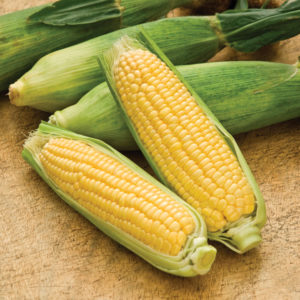 Grain futures remained overall unchanged on Friday, but kept their bearish trends as favorable weather boosted crop developing outlook in the U.S.
Grain futures remained overall unchanged on Friday, but kept their bearish trends as favorable weather boosted crop developing outlook in the U.S.
On the Chicago Mercantile Exchange, corn futures for September delivery traded at $5.7288 a bushel, up 0.22% on the day. Prices ranged between days high at $5.7388 and low of $5.7063, which was touched during the Asian session.
Corn has been on a six-day losing streak as warm and moist weather boosted yield prospects in the U.S., the largest producer and exporter. Bill Gary, the president of Commodity Information Systems in Oklahoma City said corn yields may average 156 bushels an acre this year, the third highest on record, despite the fact the number of acres sown to corn was 1.9% lower than March’s forecast, standing at 95.431 million. Production is expected to surge to 13.62 billion bushels, compared to 10.78 billion last year.
Luke Mathews, a commodity strategist at Commonwealth Bank of Australia wrote in a report today: “Improving U.S. corn-yield prospects are currently bearish for new-crop prices. Nevertheless, tonight’s USDA reports will be the most influential factor for crop prices over the next week,” he referred to the USDAs inventories and planting report.
Corn crumbled around 12% on Monday, prior to USDA’s report in which the agency said that 96% of the nation’s corn crop has emerged as of June 23, up from the preceding week’s 92%. This, however, was lower than the last year’s 100% during the comparable week and the five-year average of 99%.
As for the corn crop condition, quality has remained overall the same in comparison to the previous week, but a lot better than last year’s crop. As of June 23, 8% of the crop fell in the “Very poor” and “Poor” categories, 27% in “Fair” and 65% were categorized as “Good” and “Excellent”. In 2012, 14% of the crop was of “Very poor” and “Poor” quality, 30% “Fair” and the remaining 56 was “Good” and “Excellent”.
Wheat rises
Meanwhile, wheat September futures marked moderate daily gains. The grain traded at $6.7788 a bushel at 12:11 GMT, up 0.55% for the day. Wheat also recorded a six-day losing streak after settling 0.55% lower on Thursday. Wheat recently drew support against the stronger dollar as rainy weather delayed planting, which caused it to settle 2.46% higher last week. However, those gains were offset as the grain has plunged 2.87% so far this week. Increased wheat output is expected this year from Australia, Russia and Ukraine’s Black Sea region and Europe.
According to USDA’s report, 20% of the winter wheat crop was harvested as of June 23, up from the prior week’s 11%. This, however, is well below last year’s 63% and the five-year average 37% reading.
Winter wheat condition remained almost unchanged in comparison to last week, but is worse than last year’s. As of June 23, 43% of the crop was categorized as “Very poor” and “Poor”, 25% was “Fair” and 31% “Good” and “Excellent”. Last year’s readings stood at 17% “Very poor” and “Poor”, 29% “Fair” and the remaining 44% “Good” and “Excellent”.
As for the spring wheat, the USDA said in its report that 96% of the crop was planted, compared to 92% in the previous week and below last year and the five-year average readings of 100% and 99% respectively. As of June 23, 90% of the spring wheat had emerged, 6% above the previous week, but below last year’s 100% and the five-year average reading of 97%.
Soybeans mainly unchanged
Soybeans remained generally unchanged, marking a minor 0.12% daily gain at 12:11 GMT. The oilseed recorded a new days high at $14.3388 at 12:03 GMT, while days bottom stood at $14.2688 at 02:40 GMT. Soybeans have been swinging between daily gains and losses during June, but have settled on the red scale on a weekly basis. So far this week, soybeans have plunged 3.88% as negative economic data from China, the worlds biggest consumer, is spurring concern about the oilseeds demand. A record output in the worlds top grower, the U.S., is expected this year.
According to a Bloomberg survey among 34 analysts, U.S. farmers probably have planted 77.811 million acres of soybeans this year, up from March’s projection of 77.126 million. Domestic output is expected to be at a record level following last year’s drought that hurt supplies.
The U.S. Department of Agriculture said in its report on Monday that as of the week ending June 23, 92% of the U.S. soybeans crop was planted, up from the previous week’s 85%. However, this is below the five-year average of 95% and last year’s 99% during the comparable week.
The agency also reported that 81% of the crop emerged up to June 23, well above the prior week’s 66%, but still below the five-year average of 89% and last year’s 98% reading.
Soybean condition is overall better this year, compared to 2012. Soybeans of “Very poor” and “Poor” quality totaled 7% of the crop, 28% was of “Good” condition and 65% was categorized as “Good” and “Excellent”. Last year’s readings stood at 15% for “Very poor” and “Poor”, 32% for “Fair” and the remaining 53% was in the premium categories.





